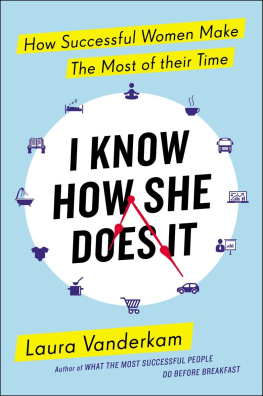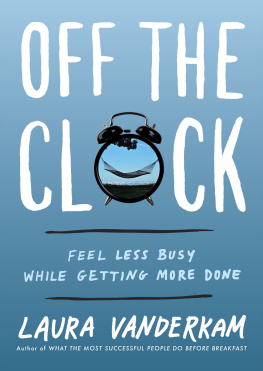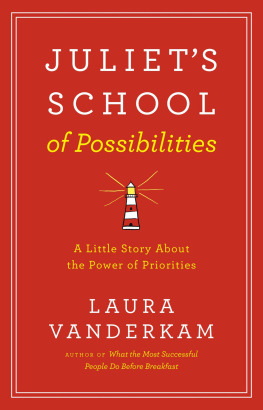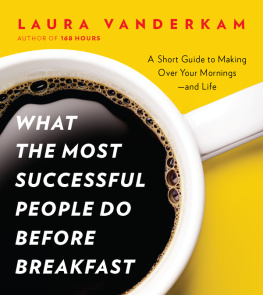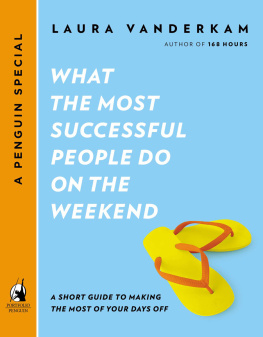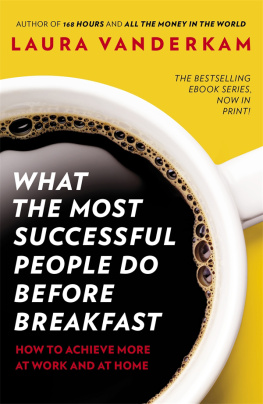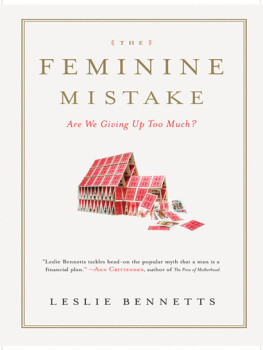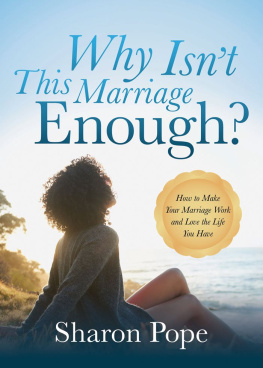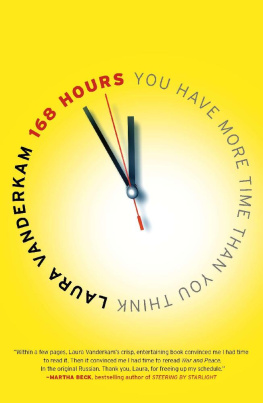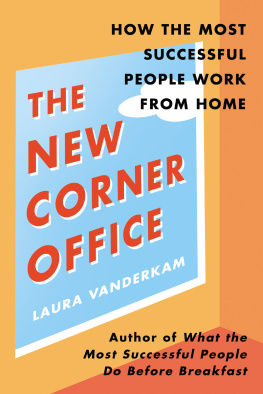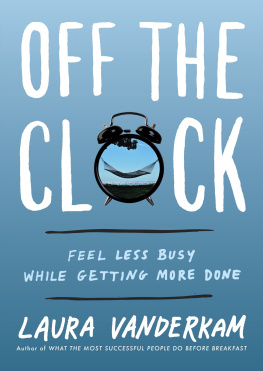USA | Canada | UK | Ireland | Australia | New Zealand | India | South Africa | China
First published by Portfolio / Penguin, an imprint of Penguin Publishing Group, a division of Penguin Random House LLC, 2015
Penguin supports copyright. Copyright fuels creativity, encourages diverse voices, promotes free speech, and creates a vibrant culture. Thank you for buying an authorized edition of this book and for complying with copyright laws by not reproducing, scanning, or distributing any part of it in any form without permission. You are supporting writers and allowing Penguin to continue to publish books for every reader.
Introduction
Remember the berry season is short.
I came across this poignant thought the other day in the most pedestrian of places: on the basket our local pick-your-own strawberry farm gives visitors before they hit the fields. I was there on a sunny June day with my seven-year-old, Jasper, and four-year-old, Sam. My husband, Michael, had taken our two-year-old daughter, Ruth, fishing at a nearby pond. I was woozy on the hay ride to the fields, from the heat and the bumps on the rutted road, and also from what was then still a new secret: another baby on the way, joining the crew when all this hilly green in southeastern Pennsylvania would be covered with snow. As I fought back my dizziness, I stared at the found poetry on this empty box: Remember the berry season is short. This box holds approximately 10 lbs level full, 15 lbs heaping full.
It is a metaphor for life, perhaps, in that everything is a metaphor for life. The berry season is short. So how full, exactly, do I intend to fill the box? Or, if we slice away the metaphor, we could just ask this: what does the good life look like for me?
I think about this question frequently, writing in the genre I do. While self-help gets a reputation for flimsiness, at its best it takes a practical look at this eternal question, with a bonus not all philosophers offer: ideas and strategies for figuring it out.
I write about the good life through the lens of time, because a life is lived in hours. What you do with your life will be a function of how you spend the 8,760 hours that make a year, the 700,000 or so that make a life: at strawberry farms, rocking toddlers to sleep, and pursuing work that alters at least some corner of the universe.
The good news for those often told to limit their aspirations is that the box will hold all these things. It can hold all these things and more.
This book is about how real people have created full lives. It is about how you can borrow from their discoveries to do so too. It is about how you can move around and rethink the hours of your weeks to nurture your career, your relationships, and yourself, and still enjoy more open space than most people think is possible. It is, in short, about how to enjoy and make the most of your time, by which I mean investing as much as you wish in everything that matters: work, family, community, leisure. It is about celebrating abundance rather than lamenting choices or claiming that no one can have it all.
I find the subject of how we spend our time fascinating. I approach time management as a journalist, studying data sets and interviewing successful people about how they use their hours. In my previous books (168 Hours and What the Most Successful People Do Before Breakfast), Ive tried to share these discoveries and tips for making readers lives work. But as I wrote these books, I realized two things. First, I was most drawn to the stories and strategies of women like me, who were building careers and families at the same time. Second, for all I probed my subjects to describe their lives, I was mostly relying on their anecdotes and storytelling. I wanted to see peoples schedules in all their messy glory. I wanted to look at their time logs and see the curious places the data led. Thats why I wrote this book, adding a researcher hat to my journalist one, trying to understand what 1,001 days in the lives of professional women and their families really look like.
There is much to learn from seeing how people use their hours to achieve their goals. Learning their strategies can be empowering; it reminds us that we have the power to shape our lives too. Years ago, when I filled out my first 168-hour (one week) time log, I thought that it seemed strange to view life as cells on a spreadsheet. But over time I came to see that I could view myself as the artist deciding on those cells. I became a mosaic maker, carefully placing tiles. By thinking about the arrangement, and watching others, and trying different strategies, over time I could create an intricate and satisfying pattern. I could create a mosaic that embraced new things: new opportunities in my working life, the new children whose lives Ive loved watching unfold. Sometimes the larger world delights in telling people that a full life will be harried, leading one to being maxed out, or torn. But while it is the rare artist who can create a perfectly blissful mosaic, focusing only on the stressful moments ignores the other sweet moments, like making strawberry shortcakes with those bright red berries, and getting a note from someone who tells you your book has changed her life.
Life is simultaneously complex and compelling. It is stressful and it is wonderful. But if you believe, like I do, that the good life can be a full lifea level full life or even a heaping full lifethen I invite you to study how you place the tiles of your time, energy, and attention. I invite you to think about the pattern with the goal, over time, of making an even more satisfying picture.
After all, the berry season is short. I believe in filling it with all the joy that is possible.
CHAPTER 1
The Mosaic
L ife is not lived solely in stories. Yet this is the way we talk about our lives: in moments that must impart a lesson. Consequently, in much of the literature on work and life, our tale would begin with a Recitation of Dark Moments: a snowstorm threatening to maroon me in Los Angeles while my husband is in Europe and my three young children are with a sitter in Pennsylvania who wasnt planning on keeping them for several snowy days straight. Or, perhaps, I am in New York City overnight in order to be on a morning show at dawn. I am trying to turn in early when my husband calls to report that, after taking the kids to the circus, hes realized theyre locked out of our new house. Hes in problem-solving mode, calling me to get the numbers of people with a spare key, and when they dont pick up the phone, letting me know that the locksmith will be there in two hours. I shouldnt worry. They have adequate bottles! But of course the net result is that I am pacing around my hotel room, picturing my five-month-old baby out in the car in the middle of the cold night. How am I supposed to sleep after that?

